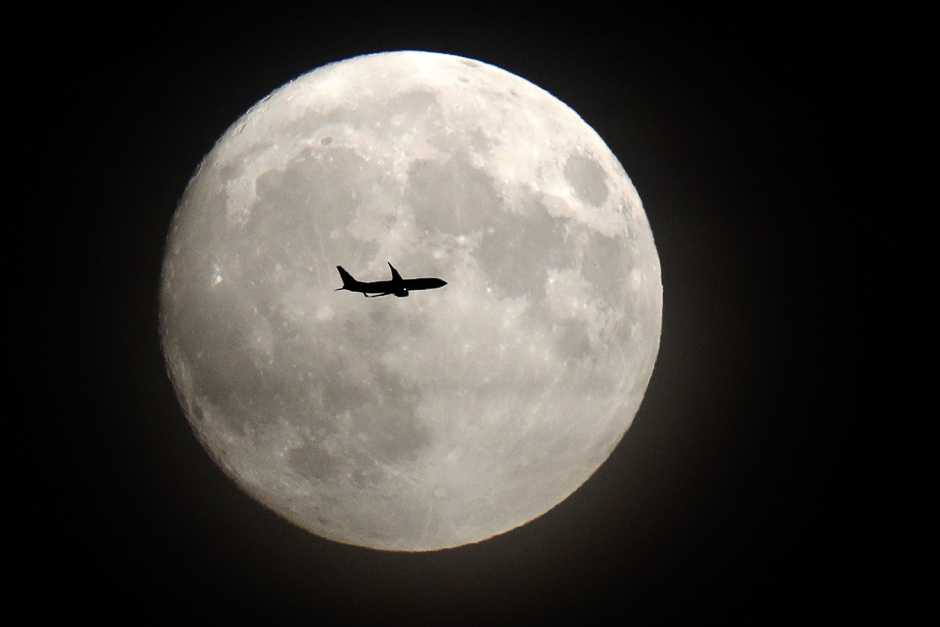
The full moon will come nearer to Earth than at any time since 1948, astronomers said. At closest approach, which occurs at 6:23 a.m. EST on Monday, the moon will pass within 216,486 miles of Earth's surface, about 22,000 miles (35,400 km) closer than average.
If skies are clear, the upcoming full moon will appear up to 14 per cent bigger and 30 per cent brighter than usual, making it what is called a supermoon, according to NASA. A supermoon occurs when the timing of a full moon overlaps with the point in the moon's 28-day orbit that is closest to Earth. About every 14th full moon is a supermoon, said University of Wisconsin astronomer Jim Lattis.
The next time a full moon comes as close to Earth will be in 2034.
Here we look at some pictures of the moon already sighted across the globe.
 Full moon sets behind the banking district in Frankfurt am Main, western Germany. PHOTO: AFP
Full moon sets behind the banking district in Frankfurt am Main, western Germany. PHOTO: AFP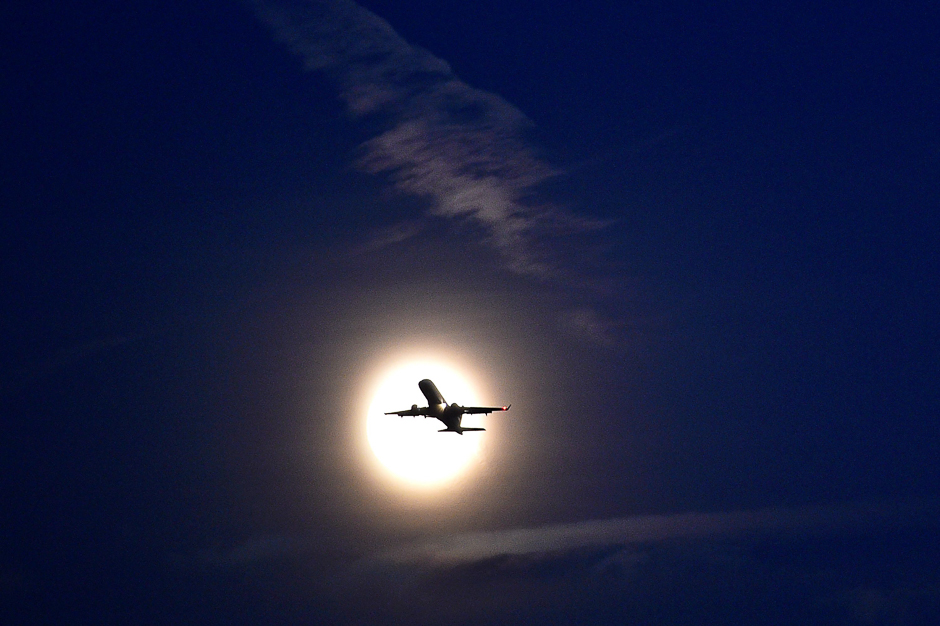 A plane takes off from London's City Airport in front of the rising moon in London's Docklands. PHOTO: AFP
A plane takes off from London's City Airport in front of the rising moon in London's Docklands. PHOTO: AFP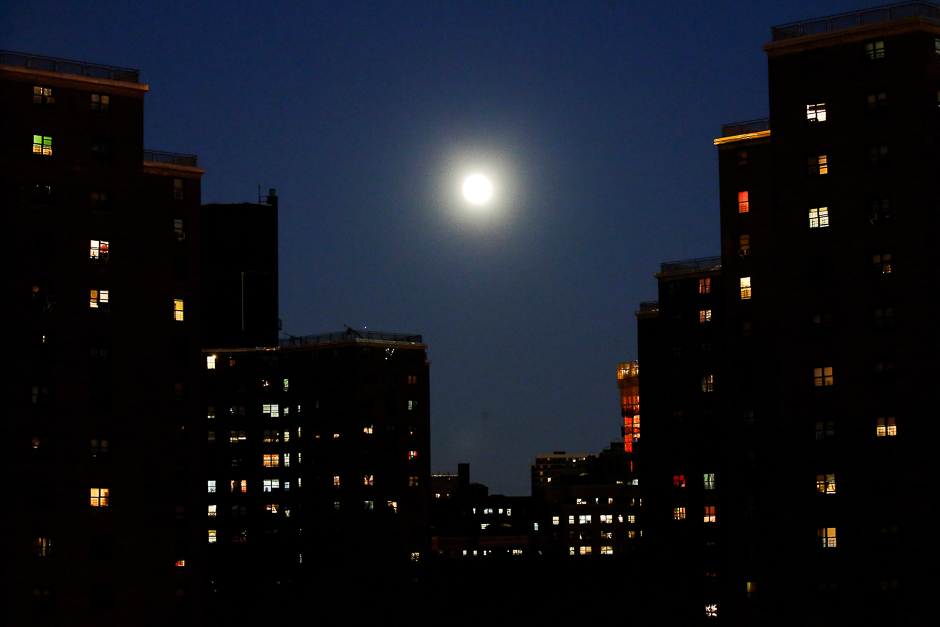 A full moon is seen during the eve of the "supermoon" in the lower Manhattan in New York, US. PHOTO: REUTERS
A full moon is seen during the eve of the "supermoon" in the lower Manhattan in New York, US. PHOTO: REUTERS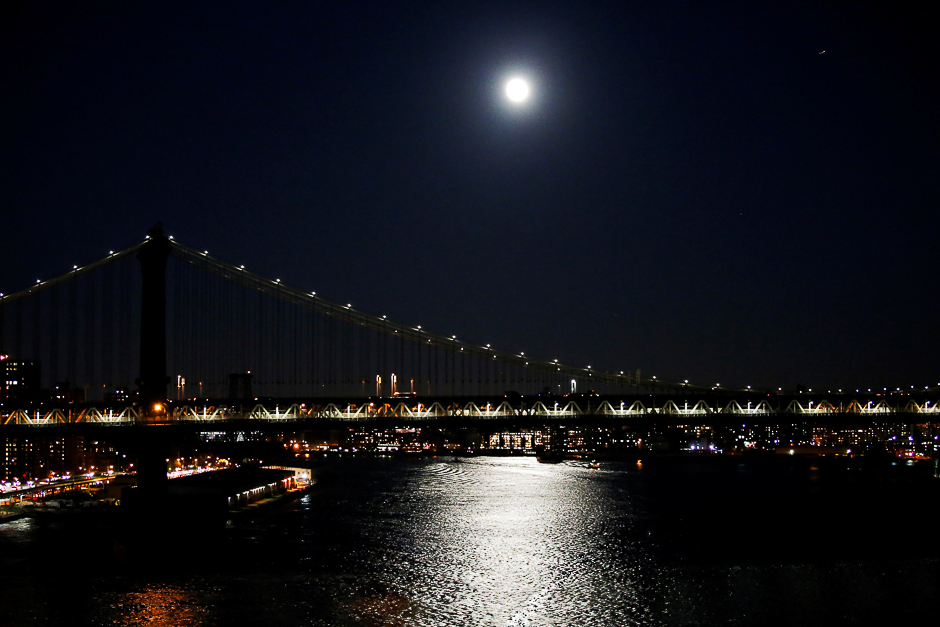 A full moon is seen over the Manhattan Bridge during the eve of the "supermoon" in New York, US. PHOTO: REUTERS
A full moon is seen over the Manhattan Bridge during the eve of the "supermoon" in New York, US. PHOTO: REUTERS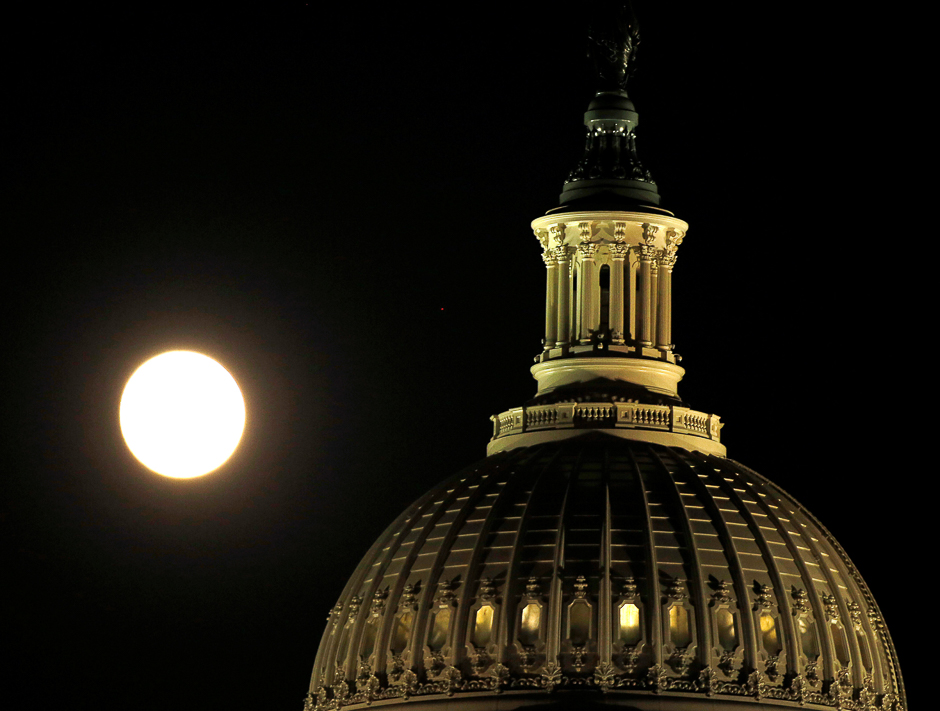 The supermoon rises over the United States Capitol dome in Washington, US. PHOTO: REUTERS
The supermoon rises over the United States Capitol dome in Washington, US. PHOTO: REUTERS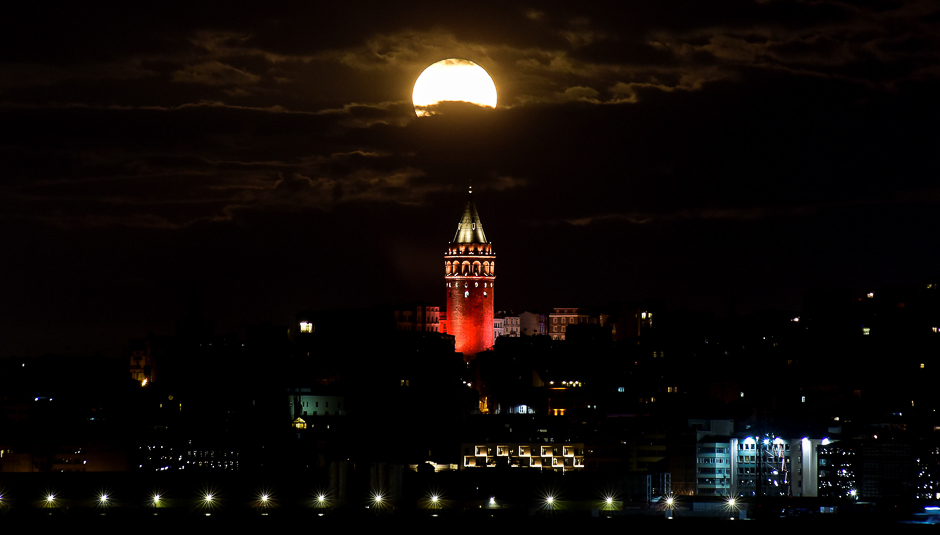 The supermoon is seen over the historical Galata Tower in Istanbul, Turkey. PHOTO: REUTERS
The supermoon is seen over the historical Galata Tower in Istanbul, Turkey. PHOTO: REUTERS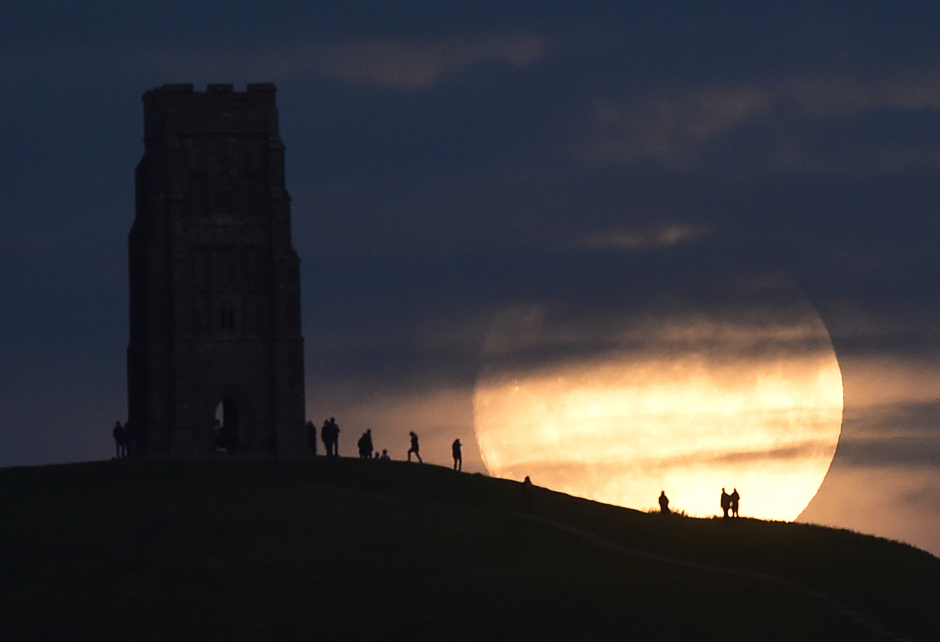 The moon rises near Glastonbury Tor, a day before the "supermoon" spectacle, in Glastonbury, Britain. PHOTO: REUTERS
The moon rises near Glastonbury Tor, a day before the "supermoon" spectacle, in Glastonbury, Britain. PHOTO: REUTERS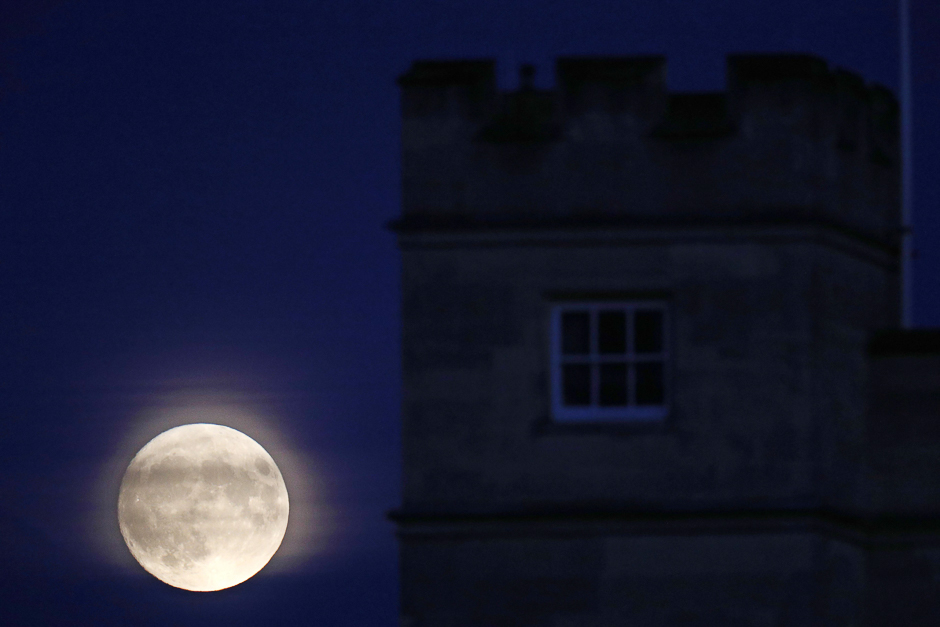 The moon rises with Syon House in the foreground, in west London. PHOTO: AFP
The moon rises with Syon House in the foreground, in west London. PHOTO: AFP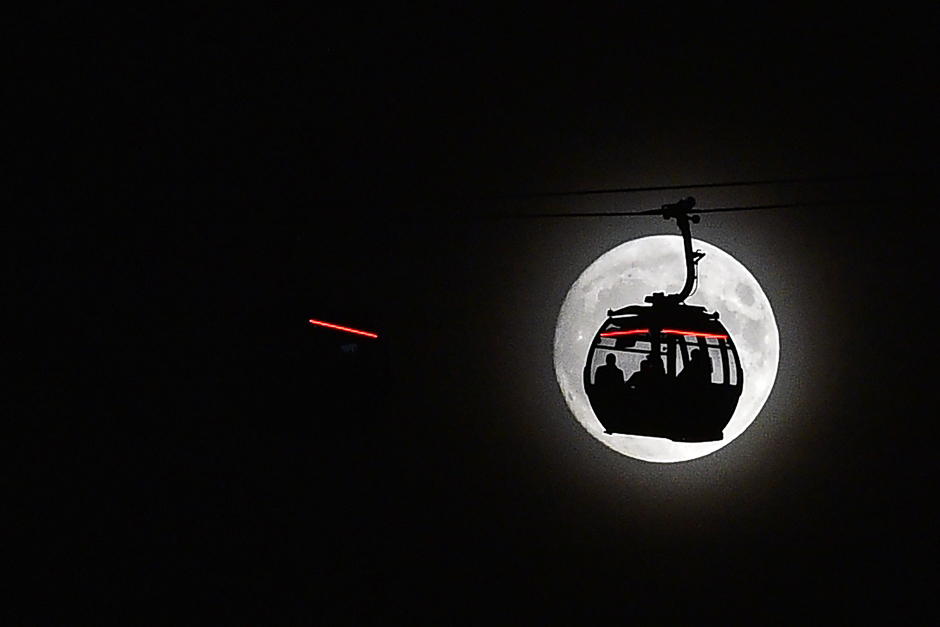 The moon rises behind a car on the The Emirates Air Line (cable car) in London's Docklands. PHOTO: AFP
The moon rises behind a car on the The Emirates Air Line (cable car) in London's Docklands. PHOTO: AFP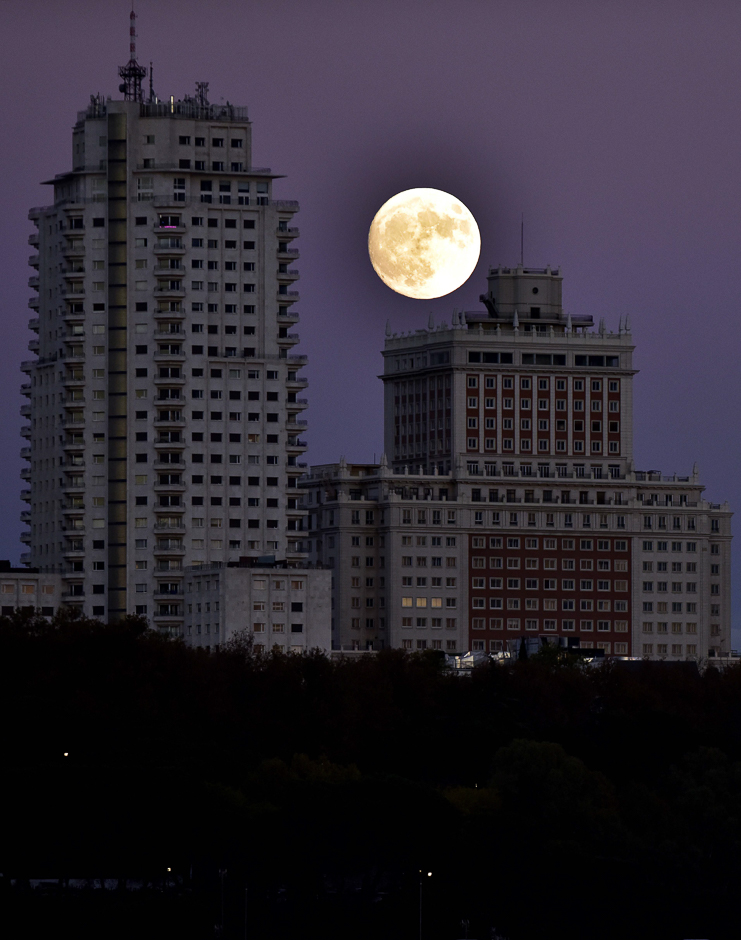 The moon rises behind the Espa, a building in Madrid. PHOTO: AFP
The moon rises behind the Espa, a building in Madrid. PHOTO: AFP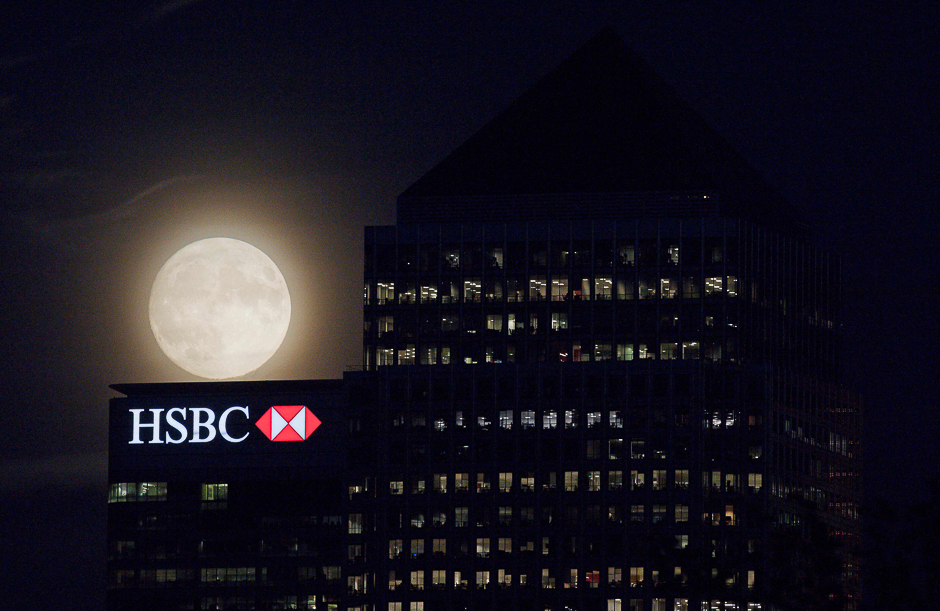 The moon rises behind Canary Wharf in London. PHOTO: AFP
The moon rises behind Canary Wharf in London. PHOTO: AFP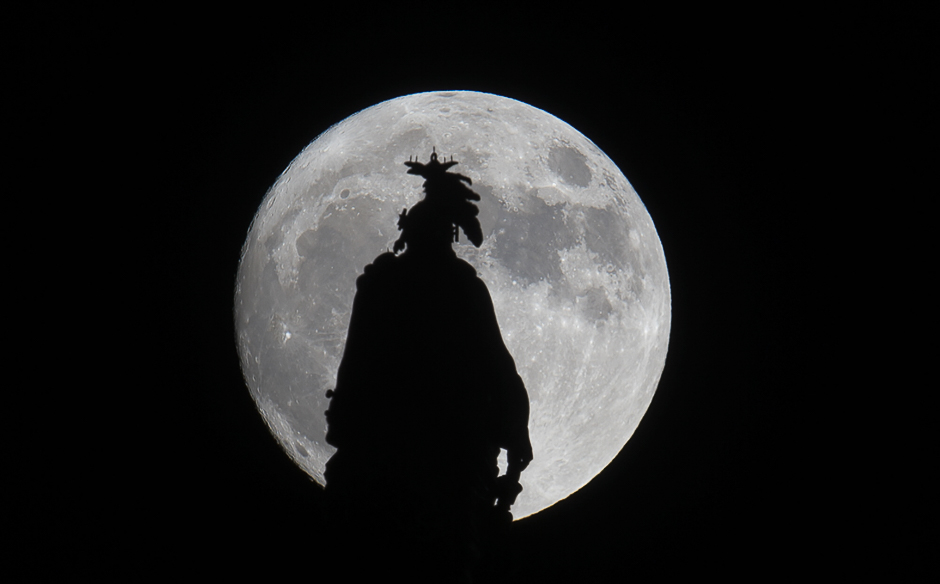 A super moon rises over the Statue of Freedom on the Capitol dome in Washington, DC. PHOTO: AFP
A super moon rises over the Statue of Freedom on the Capitol dome in Washington, DC. PHOTO: AFP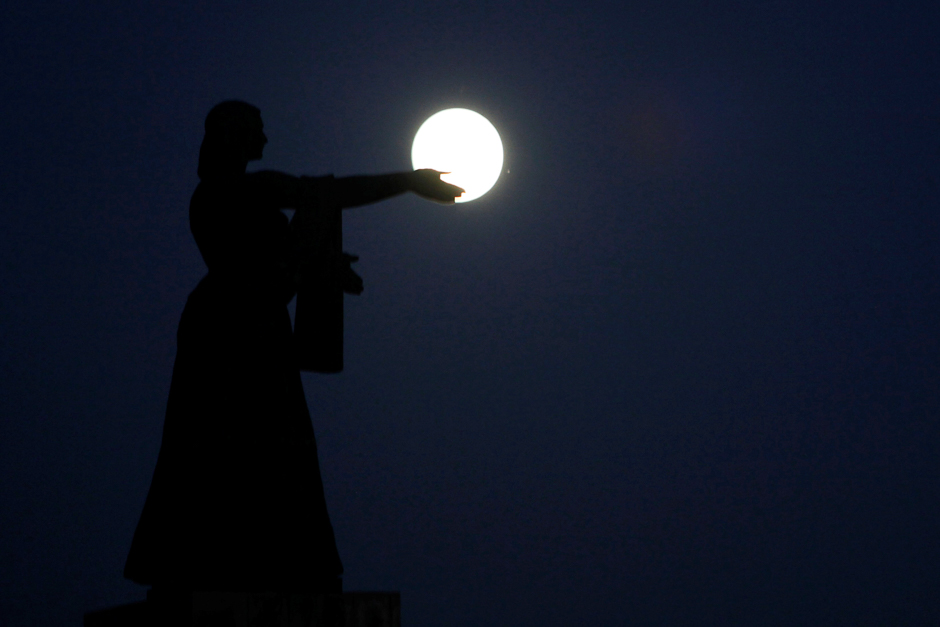 The "supermoon", the closest the moon comes to Earth since 1948, rises over La Raza monument, in Ciudad Juarez, Mexico. PHOTO: REUTERS
The "supermoon", the closest the moon comes to Earth since 1948, rises over La Raza monument, in Ciudad Juarez, Mexico. PHOTO: REUTERS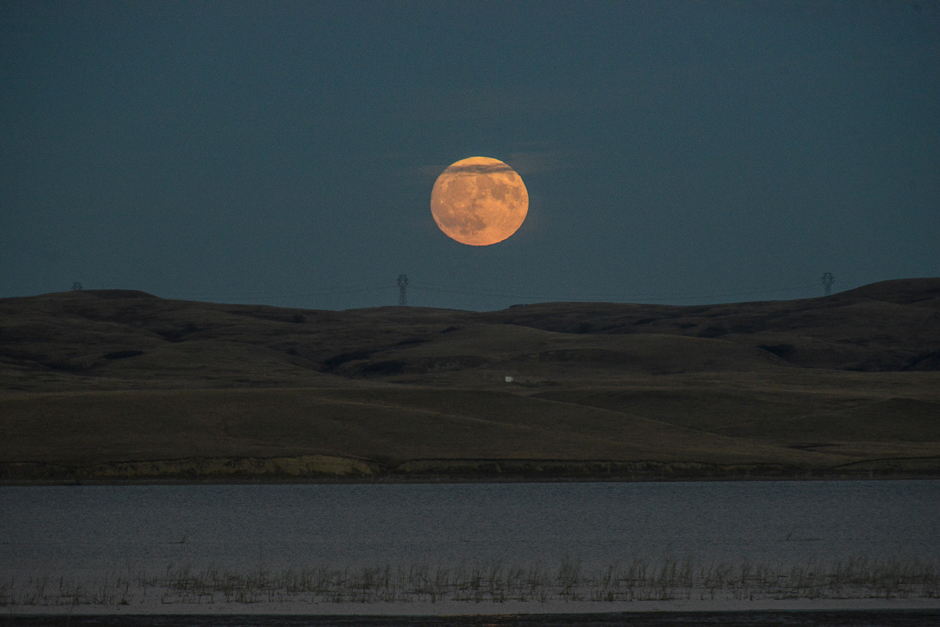 The full moon is seen in the night sky above Sydney, Australia. PHOTO: REUTERS
The full moon is seen in the night sky above Sydney, Australia. PHOTO: REUTERS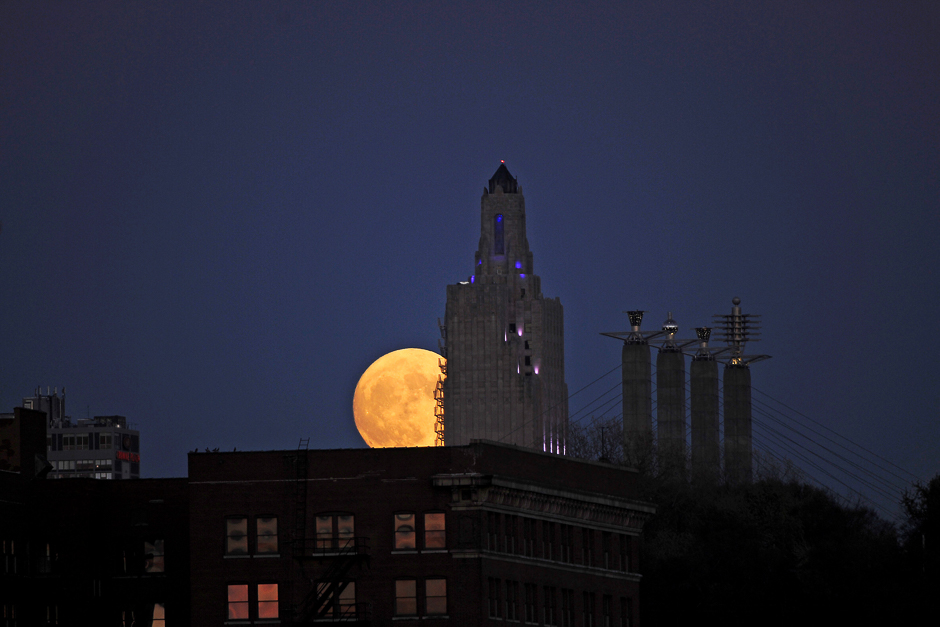 The supermoon rises over the Power and Light building in downtown Kansas City, Missouri, US. PHOTO: REUTERS
The supermoon rises over the Power and Light building in downtown Kansas City, Missouri, US. PHOTO: REUTERS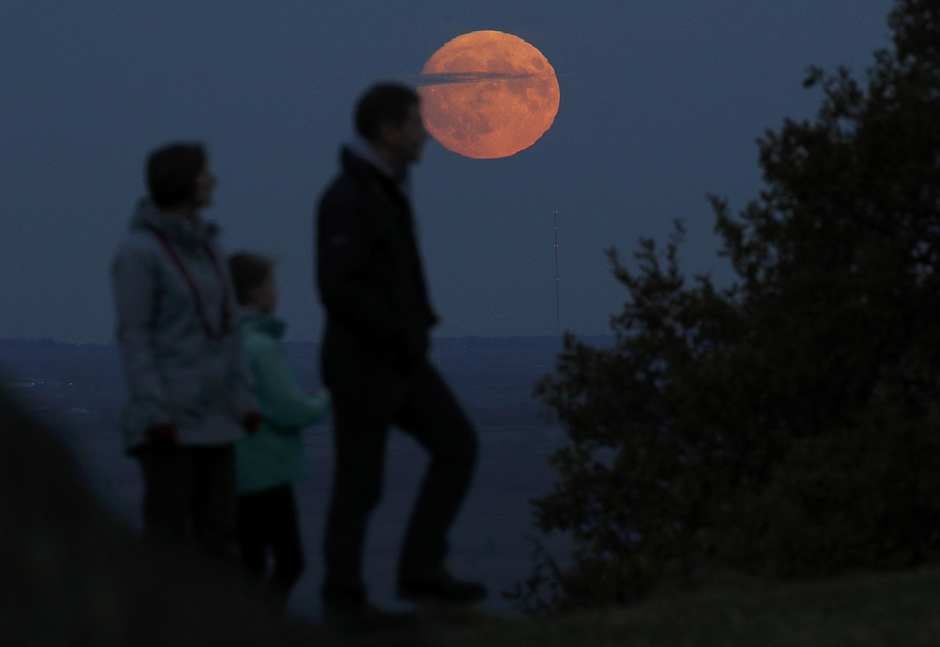 A couple watch the moon rise a day before the "supermoon" spectacle on Beacon Hill near Loughborough, Britain. PHOTO: REUTERS
A couple watch the moon rise a day before the "supermoon" spectacle on Beacon Hill near Loughborough, Britain. PHOTO: REUTERS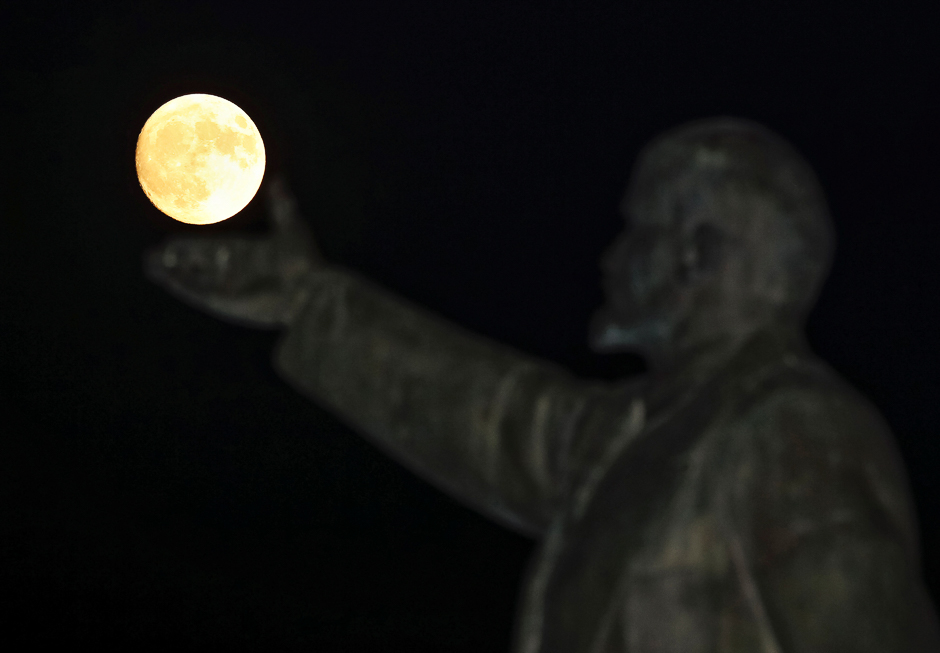 A full moon rises behind a statue of Soviet state founder Vladimir Lenin on the eve of the "supermoon" spectacle, Baikonur, Kazakhstan. PHOTO: REUTERS
A full moon rises behind a statue of Soviet state founder Vladimir Lenin on the eve of the "supermoon" spectacle, Baikonur, Kazakhstan. PHOTO: REUTERS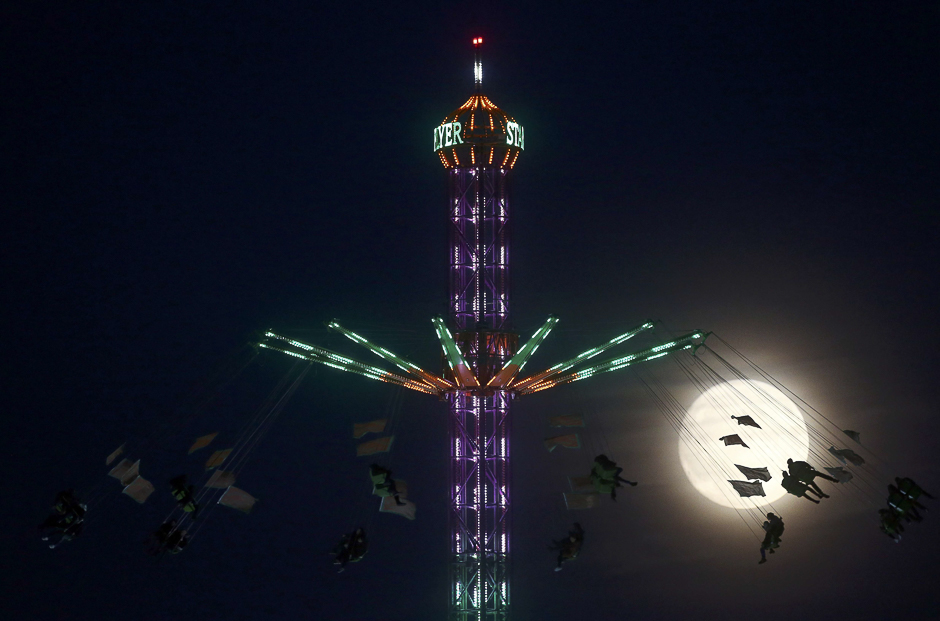 People on a funfair ride are silhouetted against the moon a day before the "supermoon" spectacle, in London, Britain. PHOTO: REUTERS
People on a funfair ride are silhouetted against the moon a day before the "supermoon" spectacle, in London, Britain. PHOTO: REUTERS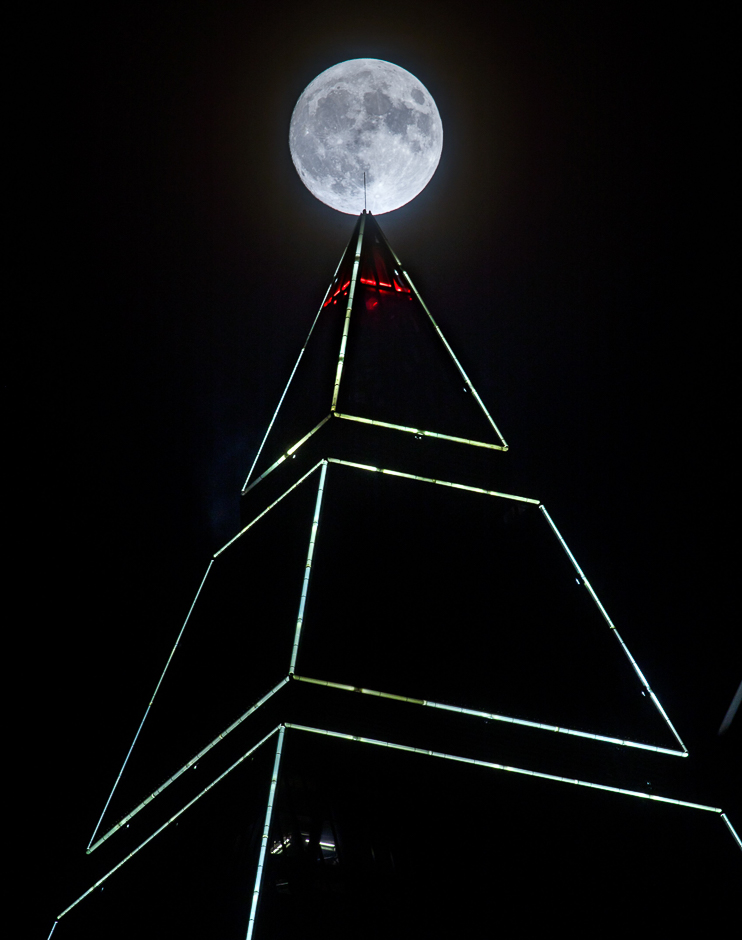 Full moon appears behind the Messeturm tower in Frankfurt am Main, western Germany. PHOTO: AFP
Full moon appears behind the Messeturm tower in Frankfurt am Main, western Germany. PHOTO: AFP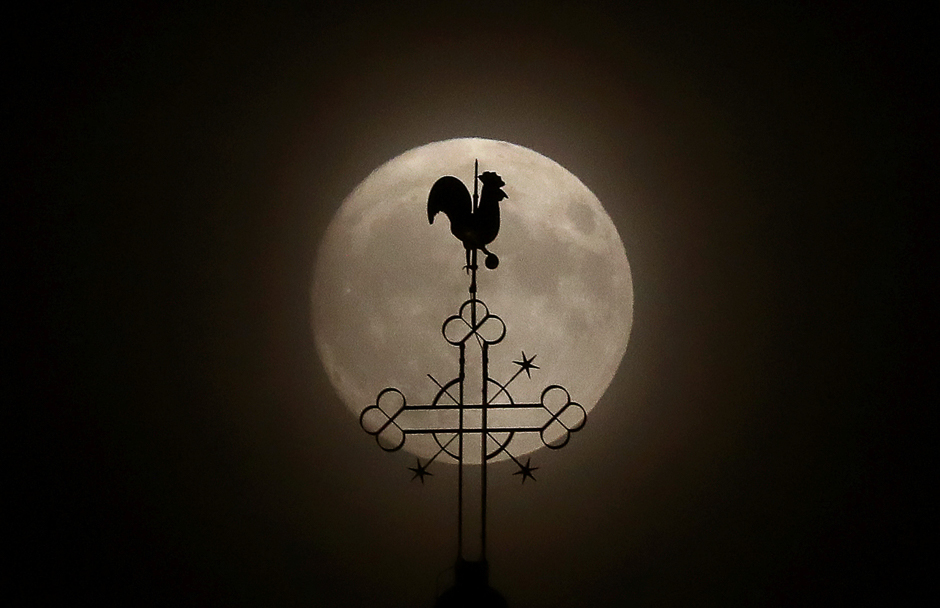 The weathercock of the church of St.Peter and Paul is seen in front of a moon on the eve of the "supermoon" spectacle in the village of Klein-Auheim near Hanau, Germany. PHOTO: REUTERS
The weathercock of the church of St.Peter and Paul is seen in front of a moon on the eve of the "supermoon" spectacle in the village of Klein-Auheim near Hanau, Germany. PHOTO: REUTERS

















COMMENTS
Comments are moderated and generally will be posted if they are on-topic and not abusive.
For more information, please see our Comments FAQ